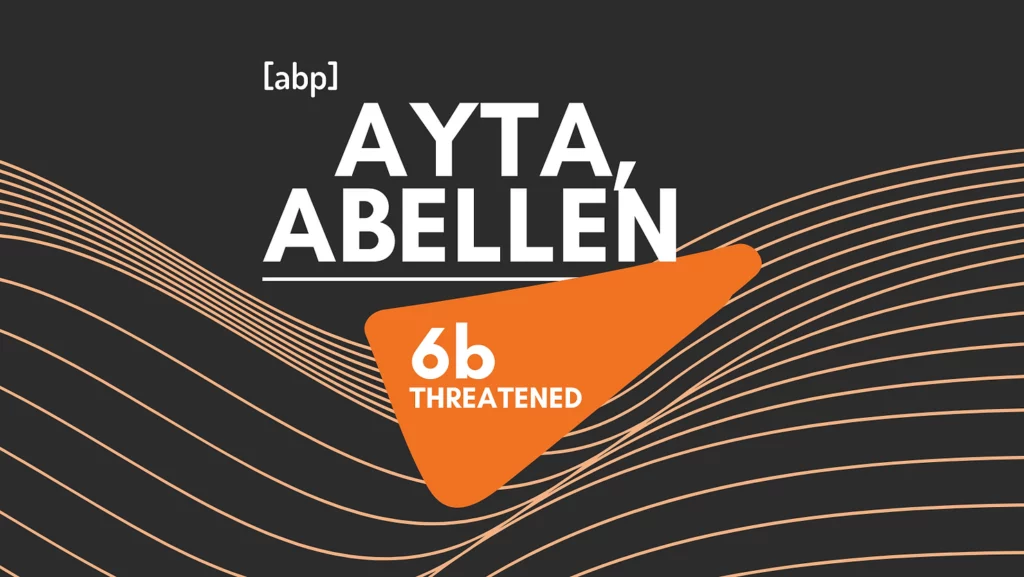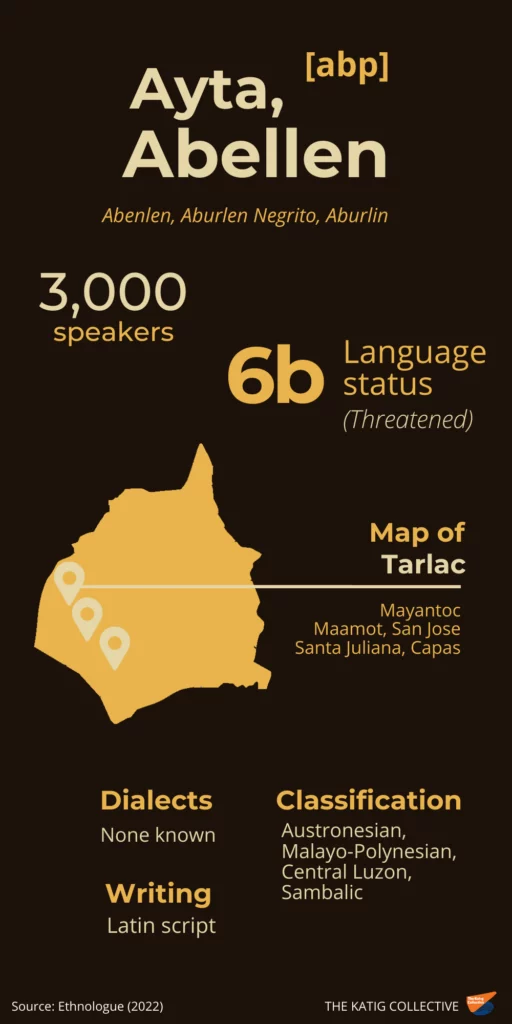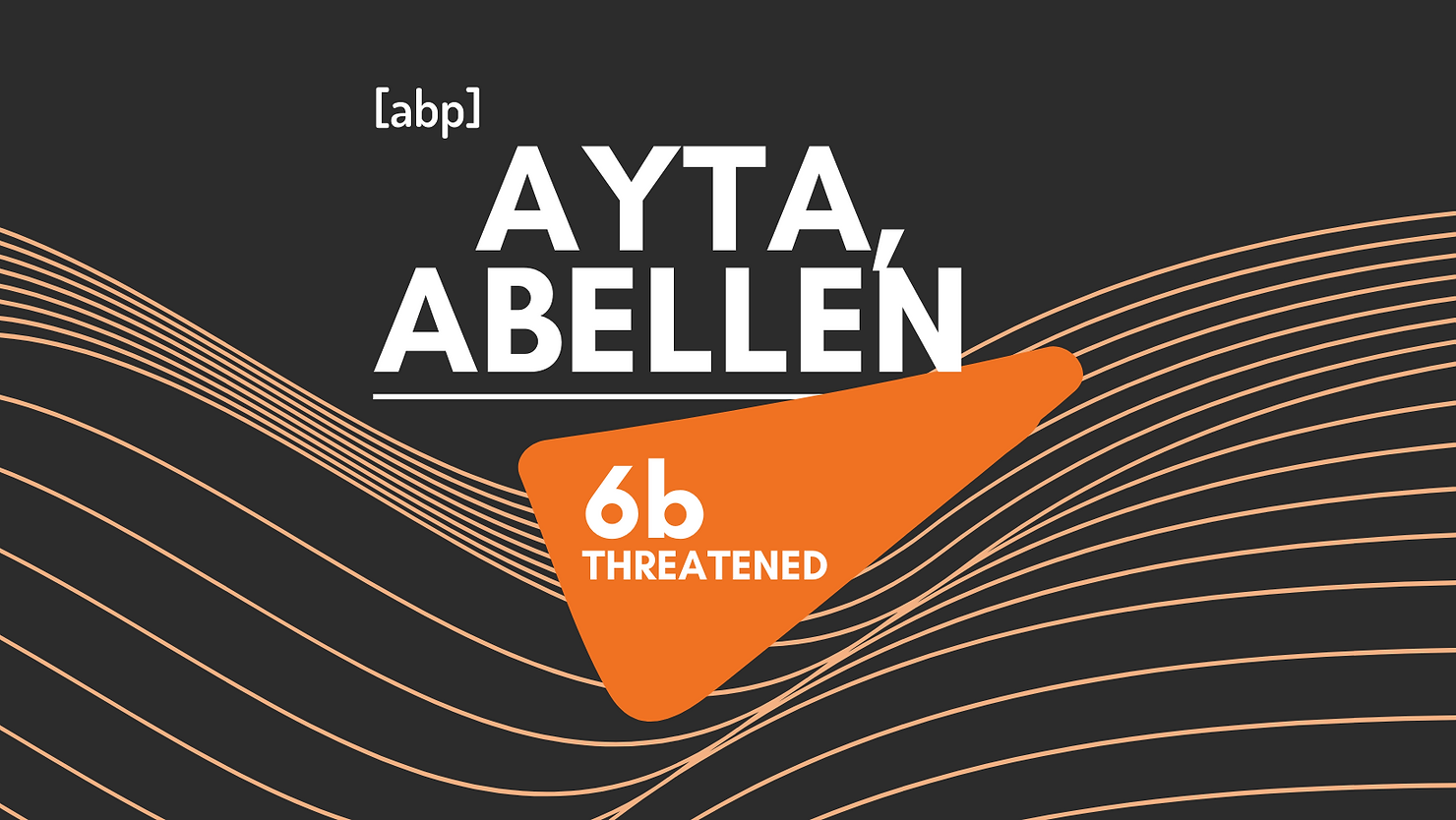Ayta, Abellen
Ayta, Abellen [abp] is a language spoken in Tarlac, specifically in the municipality of Mayantoc, and in the barangays of Maamot in San Jose and Santa Juliana in Capas. The Summer Institute of Linguistics (SIL) recorded that 3,000 of the 5,000 ethnic Abellens speak the language in 2008 but this number has decreased over the years (as cited in Eberhard et al., 2022). Ayta, Abellen is now considered a threatened language (EGIDS 6b), although some children still learn this as their L1 and some Botolan Sambals and Ilocanos use this as their L2. While this is used at home, in the community, and in church, many also speak languages like Ilocano [ilo] and Tagalog [tgl] within those domains.

The Abellen people
The present-day Abellen people would describe themselves as “mixed people” since a lot of them intermarried with members of other groups. The eruption of Mt. Pinatubo in 1991, for example, forced the Hambali Aytas to evacuate and live with the Abellens (Joshua Project, n.d.). Hambali Aytas are the speakers of Sambal Botolan [sbl], a language that Abellen speakers learn and even shift to.
Current struggles
An Inquirer article explains the years of struggle concerning the Abellen’s ancestral territory. Due to technicalities and intervention of outsiders, their certificate of ancestral domain claim (CADC), issued by then President Fidel V. Ramos in 1996, has not yet been registered as a certificate of ancestral domain title (CADT). According to the current tribal leader, the size of their land was reduced from 6,230 hectares to 5,430.5 hectares as they continue to wait for the recognition of and the agreement among several government agencies including the National Commission on Indigenous Peoples (NCIP), the Land Registration Authority (LRA), the Department of Environment and Natural Resources (DENR), and the Department of Agrarian Reform (DAR) (Orejas, 2021). With their ancestral domain under threat of being stolen, the natives’ confidence decreases, and their language preference also changes. Despite the necessity of preserving their native tongue, the more apparent challenges regarding survival and land ownership are the people’s priorities.

Works about Ayta, Abellen
Several works that feature the language are Stone’s “The Marked Topic Slot in Ayta Abellen” (2008a) and “The Sambalic Languages of Central Luzon” (2008b), and Nitsch’s “Some Ayta Abenlen Grammar” (2009). A rough draft of an online dictionary for Ayta, Abellen is available in Webonary (Stone, 2019-2021) and various videos uploaded on YouTube showcase the people’s language and culture.
References
Eberhard, D. M., Simons, G. F., & Fennig, C. D. (Eds.). (2022). Ayta, Abellen. Ethnologue: Languages of the world (25th ed.). https://www.ethnologue.com/language/abp
Hammarström, H., Forkel, R., Haspelmath, M., & Bank, S. (Eds.). (2022). Spoken L1 language: Abenlen Ayta. Glottolog 4.6. https://glottolog.org/resource/languoid/id/aben1249
Joshua Project (n.d.). Abellen Ayta in Philippines. https://joshuaproject.net/people_groups/10142/RP
Nitsch, W. (2009). Some Ayta Abenlen grammar. SIL Language and Culture Documentation and Description, 3, 1-25.https://www.sil.org/resources/archives/9289
Open Language Archives Community. (n.d.). OLAC resources in and about the Abellen Ayta language. http://www.language-archives.org/language/abp
Orejas, T. (2021, March 19). In Zambales, Aetas endure 24-year wait to call land their own. Inquirer.net.https://newsinfo.inquirer.net/1408714/in-zambales-aetas-endure-24-year-wait-to-call-land-their-own
Stone, R. (2008a). The marked topic slot in Ayta Abellen. GIALens: Electronic Notes Series, 2(3), 1-13. https://www.diu.edu/documents/gialens/Vol2-3/Stone-Topic-Focus-Ayta-Abellen.pdf
Stone, R. (2008b). The Sambalic languages of central Luzon. Studies in Philippine Languages and Cultures, 19, 158-183. https://www.sil.org/system/files/reapdata/15/69/79/156979493484041517191588675149491550325/10_Stone_final.pdf
Stone, R. (Comp.). (2019-2021). Ayta Abellen Dictionary. Webonary. https://www.webonary.org/aytaabellen/?lang=en

